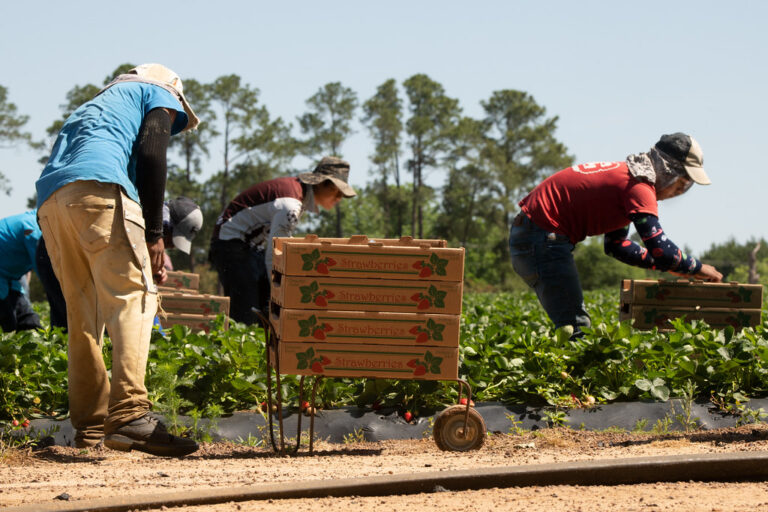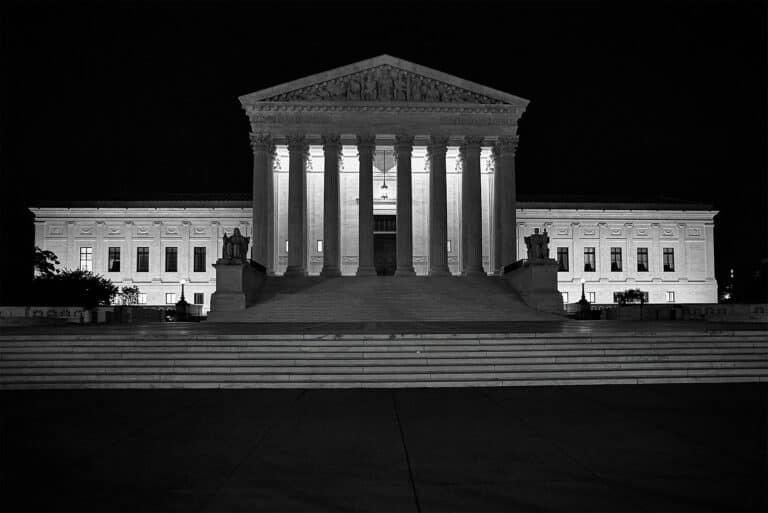
Benjamin Sachs is the Kestnbaum Professor of Labor and Industry at Harvard Law School and a leading expert in the field of labor law and labor relations. He is also faculty director of the Center for Labor and a Just Economy. Professor Sachs teaches courses in labor law, employment law, and law and social change, and his writing focuses on union organizing and unions in American politics. Prior to joining the Harvard faculty in 2008, Professor Sachs was the Joseph Goldstein Fellow at Yale Law School. From 2002-2006, he served as Assistant General Counsel of the Service Employees International Union (SEIU) in Washington, D.C. Professor Sachs graduated from Yale Law School in 1998, and served as a judicial law clerk to the Honorable Stephen Reinhardt of the United States Court of Appeals for the Ninth Circuit. His writing has appeared in the Harvard Law Review, the Yale Law Journal, the Columbia Law Review, the New York Times and elsewhere. Professor Sachs received the Yale Law School teaching award in 2007 and in 2013 received the Sacks-Freund Award for Teaching Excellence at Harvard Law School. He can be reached at [email protected].

Riva Han is a student at Harvard Law School and a member of the Labor and Employment Lab.
Three years ago, the Supreme Court decided Cedar Point Nursery and held that a California regulation granting union organizers limited access to farm owner property constitutes a taking. As a result, in order for California to continue enforcing this Agricultural Labor Relations Act (ALRA) regulation and guaranteeing union organizers access to farm property, the state must now compensate farm owners for that access. In other writing, one of us has argued that Cedar Point was wrongly decided on its own terms. Other commentators have discussed what compensation is due to the farm owners for the grant of access rights required by the regulation: Lee Anne Fennell suggests it could be less than five dollars per grower annually, while Niko Bowie contends it could be much higher, reflecting the potential decrease in profits that might follow a successful union campaign.
Here, we wish to take up a different analysis. Granting for the sake of this discussion that Cedar Point is good law, and agnostic as to the amount of compensation due to farm owners, we instead wish to call attention to a mechanism that would enable California to generate significant revenue from the parties regulated by the ALRA. Although not possible to say with certainty, this mechanism could generate more revenue than the takings clause requires the state to pay for the grant of access rights. (We assume for purposes of this discussion that the amount of compensation due – and the administrative costs involved in calculating and distributing that compensation – is not de minimis. If these costs are in fact de minimis, then California should be able to continue enforcing access rights as it did prior to Cedar Point.)
The mechanism we have in mind is known in California as a “regulatory fee” and is common across multiple regulatory contexts in the state. For example, family farms pay regulatory fees to offset the costs the state incurs in supervision of water usage, paint manufacturers pay regulatory fees to offset the state’s cost of mitigating the adverse health effects of lead paint products, and utility companies pay regulatory fees to offset municipalities’ costs of monitoring emissions. Our fee would require parties regulated by the Agricultural Labor Relations Board (ALRB) – farm owners and unions – to offset the state’s costs of investigating unfair labor practices (ULPs) under the ALRA. As we discuss below, the fee could be apportioned in various ways that would capture the parties’ ULP track record or their total number of employees. And while California cannot simply charge farm owners for the compensation the state owes those farm owners under the takings clause, a regulatory fee that acts as a pooling mechanism designed to pay for ALRB investigations does not amount to such a charge.
The California courts have made clear that the legislature has fairly wide discretion in implementing regulatory fees, despite ballot initiatives limiting governmental authority to raise taxes. For example, in California Building Industry Association v. State Water Resources Control Board the California Supreme Court held that regulatory fees are permissible if they do not exceed reasonable costs related to administering a state program, are not for unrelated revenue purposes, and bear a reasonable relationship to the burdens created by fee payers’ activities. Moreover, the appellate court in Cal. Ass’n of Prof, Scientists v. Dep’t of Fish & Game clarified that a regulatory fee can be imposed for purposes “broader than the privilege to use a service or obtain a permit.” Indeed, a regulatory fee can be imposed to support a “regulatory program” whose purpose is the “protection of the health and safety of the public.”
In 1978, Proposition 13 added a two-thirds legislative vote requirement for increases to state taxes, and Proposition 26, passed in 2010, imposed further restrictions. As noted by the California Supreme Court, however, Proposition 26 exempted from these supermajority requirements any charges “imposed for the reasonable regulatory costs to the State incident to issuing licenses and permits, performing investigations, inspections, and audits, enforcing agricultural marketing orders, and the administrative enforcement and adjudication thereof.” Cal Const, Art. XIII A § 3.
A regulatory fee in the ALRA context would enable the state to recoup from the regulated parties some of the expenses involved in administering the Act. Given the language of Prop. 26, one potential set of expenses a fee could cover are the costs the ALRB incurs in performing investigations of ULP charges. As a rough estimate of total costs involved, we know that the ALRB maintains an annual budget of $8.3 million for the Office of the General Counsel, whose responsibilities include “investigating unfair labor practice charges.” The subset of this budget allocated to ULP investigation could be recouped through the regulatory fee.
If the costs to be covered by the fee are the Board’s ULP investigatory expenses, the next question is how the fee should be apportioned among the regulated parties – among individual employers and unions. One possibility would be to follow the example of San Diego Gas & Electric Company v. San Diego County Air Pollution Control District, where regulatory fees against polluters were allocated based on emissions generated. As applied to the ALRA context, this approach would apportion fees according to the number of past ULPs committed by the party, or alternatively, according to the number of ULP complaints filed by the Board against the party – perhaps in addition to a minimum fee that every party would pay. Given the prevalence of settlement in ULP proceedings, relying on adjudicated ULPs may substantially underrepresent the relevant conduct, thus suggesting the advantages of using complaint data. (Also relevant is the fact that a complaint issues only after the ALRB general counsel’s office investigates and finds “reason to believe” that a ULP has occurred). In any event, either of these approaches would calibrate fees according to how active a “user” of the Board’s investigatory resources the party is – partly analogous to experience rating in the unemployment insurance context. A different approach would assign a flat fee based on the number of employees hired annually or seasonally by the employer or the union; the theory of apportionment here being that the more employees a party has, the more likely they are to require the Board’s investigatory budget.
How would such fee apportionment systems cash out in the ALRB context? Start with an apportionment approach tied to past ULP complaints. From 2012 – 2022, the General Counsel issued a total of 171 ULP complaints, 167 of which were issued against farm employers and 4 were issued against unions. This means that the ULP complaint allocation device would result in growers paying 97.6% of total fees. Relying on adjudicated ULP violations would result in farm employers paying 87% of the fees and the union paying 13%. And using a per employee allocation system would have a similar result: farm owners employ over 400,000 farmworkers across the state while the United Farm Workers union has about 50 employees. Under this type of allocation system, accordingly, growers would pay more than 99.9% of the fees, leaving the UFW with approximately .01% of the total.
California cannot make farm owners pay to the state compensation that, under the Takings Clause, the state owes those farm owners for union access rights. But the kind of regulatory fee outlined here does not constitute such a payment scheme. Instead, such a fee takes cognizance of the very real costs involved in administering a statute like the ALRA and – as is the purpose of the regulatory fee mechanism – shifts some of the costs of the regulatory program from the general tax-paying public to the regulated parties. The fact that such a pooling mechanism would have the effect of covering the cost to the state of enforcing the access provision of the ALRA is a benefit that should not render the mechanism invalid.










Daily News & Commentary
Start your day with our roundup of the latest labor developments. See all
December 22
Worker-friendly legislation enacted in New York; UW Professor wins free speech case; Trucking company ordered to pay $23 million to Teamsters.
December 21
Argentine unions march against labor law reform; WNBA players vote to authorize a strike; and the NLRB prepares to clear its backlog.
December 19
Labor law professors file an amici curiae and the NLRB regains quorum.
December 18
New Jersey adopts disparate impact rules; Teamsters oppose railroad merger; court pauses more shutdown layoffs.
December 17
The TSA suspends a labor union representing 47,000 officers for a second time; the Trump administration seeks to recruit over 1,000 artificial intelligence experts to the federal workforce; and the New York Times reports on the tumultuous changes that U.S. labor relations has seen over the past year.
December 16
Second Circuit affirms dismissal of former collegiate athletes’ antitrust suit; UPS will invest $120 million in truck-unloading robots; Sharon Block argues there are reasons for optimism about labor’s future.